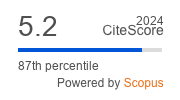Article | Open Access
Central Bank Digital Currencies and International Crises: Toward an Authoritarian International Monetary Order?
| Views: | 2957 | | | Downloads: | 4159 |
Abstract: Central bank digital currencies (CBDCs) may be viewed as an adaptive response to a perceived threat from stablecoins, but international crises matter. Covid-19 induced a top-down digital transformation of the economy, a more state-led economy with contact-free payments, while Russia’s subsequent war in Ukraine and the Western sanctions against Russia have further increased the incentive to use blockchain technology and CBDCs as political enterprises to neutralize the effects of sanctions, and thereby as weapons in economic warfare. This article considers Covid-19 as a turning point, amplified by Russia’s war in Ukraine, and applies fiscal sociology to analyze the use of blockchain, cryptocurrencies, and CBDCs as policy tools to establish economic and political hegemony, where CBDCs may contribute to the emergence of an authoritarian international monetary order. A fragmented order, involving conflict between an autocratic society bloc and an open society bloc, would be feasible, but such a conflict may make open societies more authoritarian. In open societies, cryptocurrencies and stablecoins belong to the market square, while CBDCs belong to the public square, but CBDCs may blur the boundaries of those squares, submitting the market square to the public square. Payment systems may become public–private partnerships controlled by central banks, turning the squares into fortresses and transforming them from open access orders to limited access orders.
Keywords: blockchain; digital currencies; Covid‐19; cryptocurrencies; monetary system; Russia–Ukraine war; sanctions; stablecoins
Published:
© Thomas Marmefelt. This is an open access article distributed under the terms of the Creative Commons Attribution 4.0 license (http://creativecommons.org/licenses/by/4.0), which permits any use, distribution, and reproduction of the work without further permission provided the original author(s) and source are credited.


